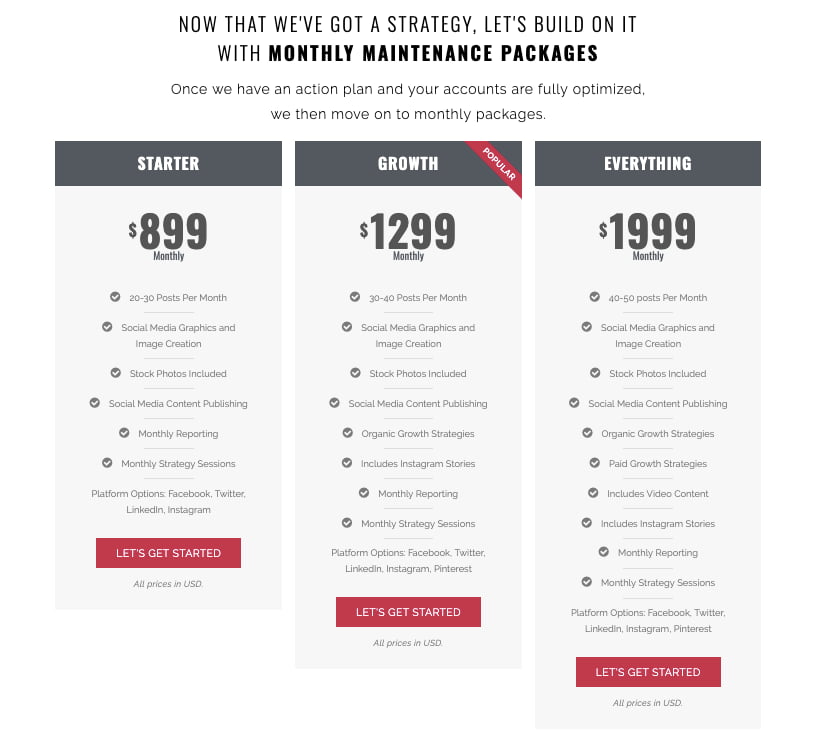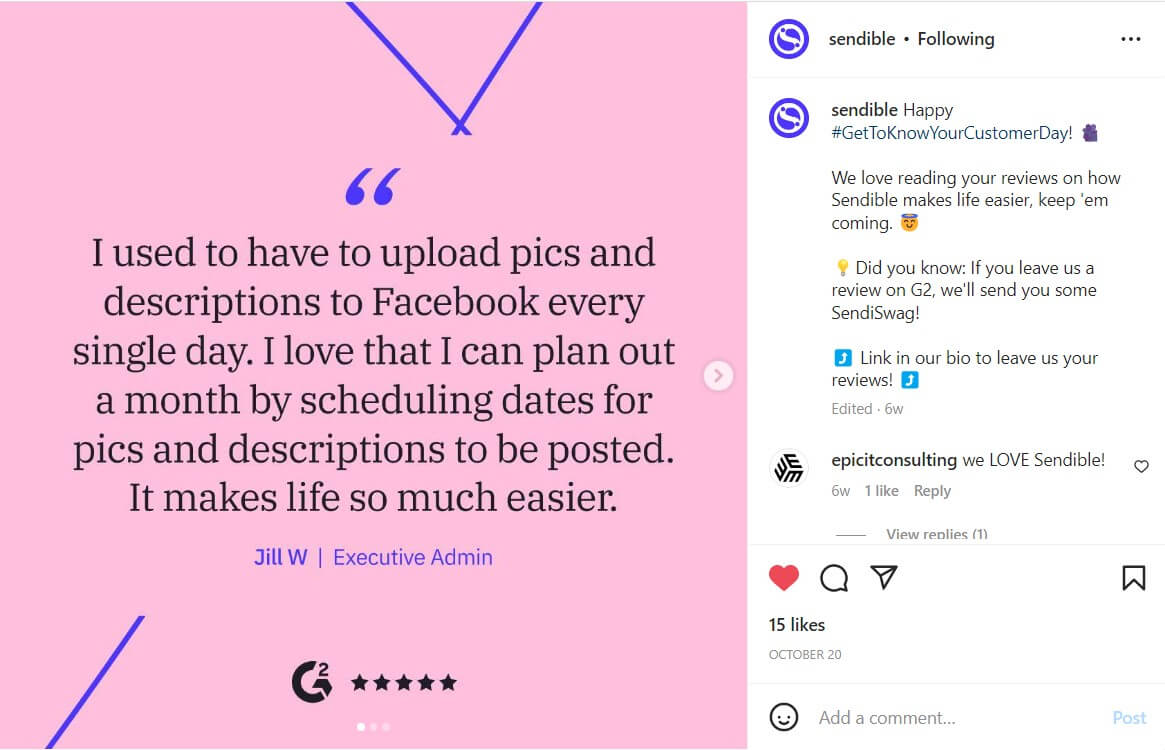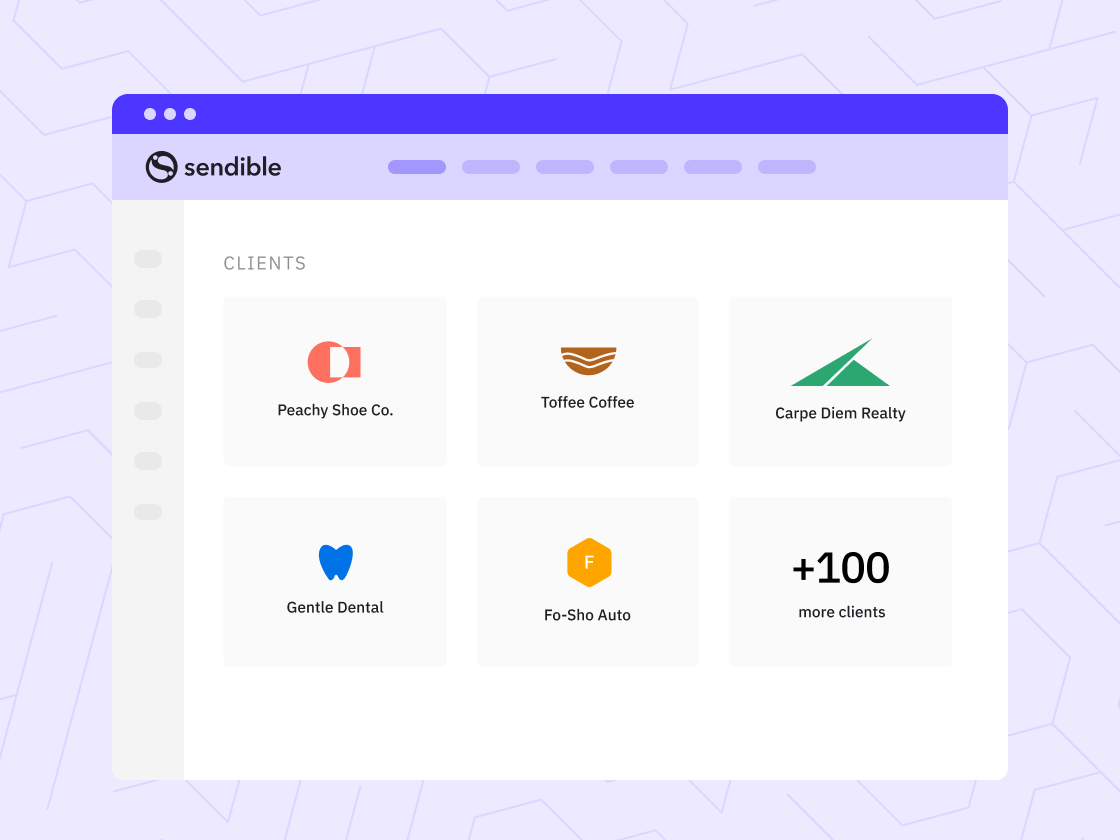Sendible insights 6 Ways to Win and Keep New Clients for Your Startup Social Media Agency
You've taken the plunge and started your own social media agency. Startups live and die on new business, and there's no other time when winning new clients will have a bigger impact.
Going from none to one to two clients is arguably a bigger transition than moving from 20 to 25, and without any momentum or case history behind you, it's tough.
Most decision-makers believe their business can handle their own social media in-house because almost everyone runs their own personal social media profiles.
Many leaders also believe that they should run their own social media pages themselves for authenticity’s sake: who better to post about “us” than us?
There comes a time when your potential clients realise they either don't have time to run their social media effectively any more or they grow frustrated at their inability to drive meaningful likes, shares, comments, replies, RTs, traffic and leads.
This is your moment.
But how do you start a startup social media agency, and what are the keys to your early success?
- Tap into - and grow - your personal network
- Find other businesses to partner with
- Use social media to find new clients
- Host a free training session on a specific industry topic
- Drive word-of-mouth referrals
- Plan to scale your startup from day one
1. Tap into - and grow - your personal network
Your first and easiest port of call is your family, friends, and their wider networks. Tell people that you’re starting a startup social media agency and you’re looking for clients. Ask your friends and family for their advice, help and support, even if it’s simple stuff like brainstorming ideas about what to call your agency.
You’ll get plenty of ideas and support from your close network, and if you’re able to grow your social media agency into a fully-fledged business in the future, their support will be invaluable along the way.
And don't forget to maximise your presence on LinkedIn. Before you start promoting your new agency, make sure you optimise both your personal profile and business page to attract an organic audience. Utilise Sendible's free LinkedIn Audit checklist to ensure that you have everything in place to get noticed and keep your audience engaged.

Stand Out on LinkedIn: Lessons from the Best Profiles and Company Pages
Your network might also open a few doors for you to pitch and interact with businesses. Even if these early meetings aren’t successful, make sure you learn as much as possible and ask for feedback after every pitch.
You should always strive to improve the quality of your pitching and tailor each one as closely as you can to the client, their needs, problems, how you can solve them, and why you’ll be fantastic to work with. Your personality, agility and likely relatively low monthly cost as a new startup agency are your strongest suits here.
“One entrepreneur wanted to meet one of the richest men in the world to fund his company. It took eight months of nurturing relationships and asking for introductions, but he got the meeting, made the sale and now has a board member so prominent that he can attract virtually anyone else to his venture.” - Stever Robbins, Entrepreneur
Even if the door closes on you, stay in contact with the people you're communicating with and pitching to. They don’t have a need now, but they might in a year’s time.
2. Find other businesses to partner with
This can start very simply. Just sit with a notepad, identify who your target clients are and write a list of the other services they might want or need. Services that you don’t offer.
For example, when you’re looking for social media clients, it’s likely they have websites that require design and development, search engine optimisation, a blog they need content for, pay-per-click ads to drive traffic, and so on.

How to Package Social Media Services to Clients for Your Agency
Set yourself a daily or weekly target number of people to contact who work in these related (but non-competing) services, and see if there’s a dialogue you can have with them. It’s probable this will initiate at least a few conversations at one time, so start a spreadsheet or recruit some software to help you keep a list of your contacts.
Two simple rules to create an outreach email
- Start by addressing a problem they might be facing. For instance, if they're a startup design agency, their clients may be asking about social media.
- It's important to personalise your emails and show genuine interest in the recipient. Ask how they are and what they did over the weekend to establish a relationship beyond just trying to win clients for your startup.
You’ll probably enjoy the process and can make new friends on the way.
There’s a good chance this approach, while time-consuming, will provide you with the opportunity to offer your service alongside someone else’s. You may find an SEO agency whose clients always ask about social media management, and that’s a great opportunity for you to partner with them, which could yield more business down the line.
3. Use social media to find new clients
Remember how we said in the first step you should use LinkedIn for networking?
Well, you can use all social media platforms to do the cold outreach.
It’s safe to assume the person you’re contacting might receive ten or more requests a day like the one you’re sending, so make sure you:
- Your profile image, header, and bio are well-optimised and include a link to your website.
- Ensure your branding is unique and stands out from the competitors.
- Avoid being spammy, and instead, utilise the inbound approach to solve the pain points of potential clients.
- Rethink your community management strategy and get active in responding to comments not just under your posts but under the posts of other creators from your niche.
.jpg?width=1200&height=630&name=how-to-promote-your-agency_feature-image%20(1).jpg)
How to Promote Your Digital Marketing Agency on Social Media [11 Examples Included]
LinkedIn is a great place to source new social media clients. Being able to see someone’s job title and level of seniority will help you pitch your message appropriately, while their personal and company profile will give you a good insight into their business challenges.
But don't be shy to use platforms like TikTok as well! This social media channel offers a plethora of ways to engage with the community that can come in handy when looking for new clients.
You might now be wondering where to find the actual clients on social media, and here are a few (not so) obvious ways:
- Use the power of 2nd and 3rd connections on LinkedIn. You have your network, and now it's time to broaden the scope of the people you contact. You can use LinkedIn invitations as a first step of the outreach.
- Reply to comments with videos. Yes, Instagram Reels and TikTok videos have a massive reach, and the best thing is that you can now reply to comments under your posts with short-form videos - the most popular content out there! This way, your potential new clients will see you're utilising the trending features, that you care about your community, and that you're ready to offer advice and truly be there for your clients.
- Use Twitter Advanced Search. This semi-secret feature can become your best friend in this quest, as its advanced filters will allow you to get a microscopic view of everything you need.

12 Ways to Get the Most out of X (Twitter) Advanced Search
4. Host a free training session on a specific industry topic
While an often-employed tactic, this is a great way to put yourself and your new venture on the radar of dozens or more potential new clients.
Choose a specific topic to host your training session around and use a catchy caption to reel your audience in.

Crash Course: Generative AI for Agencies
Generative AI is here and it is changing the way social marketers do their jobs. But how do you use AI for maximum impact?
Zoning in specifically on one platform is likely to have far more interest than a coverall “Increase your social media engagement” title, which has been done over and over again.
Quick tips for maximising your free training session:
- Work hard to make sure your training is actionable and as up-to-date as possible.
- Keep your session to no longer than 30 minutes, if you can, and reassure your audience you’ll be starting and finishing on time.
- Make your points actionable so your audience can literally take away your advice, apply it, and see some kind of result.
- This will also really help with your follow-ups, as you can email and ask your prospects how they got on with your advice.
- Consider using boosted posts and adverts on social media platforms to drive sign-ups for your training session, and make sure you record the contents so you have a video that you can continue to market it after the event. If you don’t have any budget available, do some groundwork using Boolean searches on Twitter and search on sites such as Quora to find and invite people to your session.
- Make sure you follow up by email or phone call with everyone who signed up for your training session, sending people who didn’t attend a copy of the video and asking those who did attend what - if anything - they’ve used your advice for. If the answer is that they:
a) Used the advice and achieved great results, your foot’s in the door and you can ask if they want more great advice, or
b) They didn’t have the time to use the advice - bingo! Ask them if they’d like to have a conversation about hiring your startup agency to buy themselves more time, or
c) They used the advice but didn’t see results - no problem. Invite them to your next training session, or, better still, offer them a bespoke audit of their social media and provide them with new insights to improve their profiles
5. Drive word of mouth referrals
It’s a well-worn phrase, but you should focus on delighting the first clients you win. These guys are the cornerstones of your flourishing enterprise, and you should look to make it clear they’re a priority.
Almost every business owner and decision-maker has access to a wider network of other people, and they’re usually happy to recommend.

How to Turn Customer Feedback Into Amazing Social Media Posts for Your Clients
In fact, business leaders are usually quite proud if they’ve managed to find and recruit a fantastic agency that’s saving them time and enabling them to focus on other areas.
Once you’ve enjoyed a sustained spell of impressing your new clients with great results, organic traffic, growing social media profiles and influencer outreach, it’s time to simply ask them if they’d be willing to recommend you to their wider network. You might decide to offer some kind of incentive, such as a discount, but if your relationship with them is strong and authentic, it’s likely they’ll want to recommend you anyway, provided you assure them it won’t distract from your work on their brand, of course!
6. Plan to scale your startup from day one
As you grow your agency portfolio and gain more clients, you will notice that your business becomes increasingly complex.
You might be hiring new staff, renting larger office space, and liaising with your roster of clients, all of which come with an added drag on your precious time.
This is where recruiting a tool to help manage your social media across multiple client accounts can be a crucial difference-maker between juggling dozens of accounts and logins and managing them all from one easy-to-use dashboard.
An agency social media tool will also help you report on your performance to your clients with dashboards and PDF reports produced in real-time, demonstrating how effective you and your team are at growing their business on social media.
Your clients want more likes, shares, comments, retweets, followers, organic traffic and leads, and not only can you deliver it all, but you can prove their return on investment at the same time.
Data always makes for the most compelling arguments, and your clients will be wowed by the quality of social media reporting and analytics you have to hand at any given time.
Text copied!





